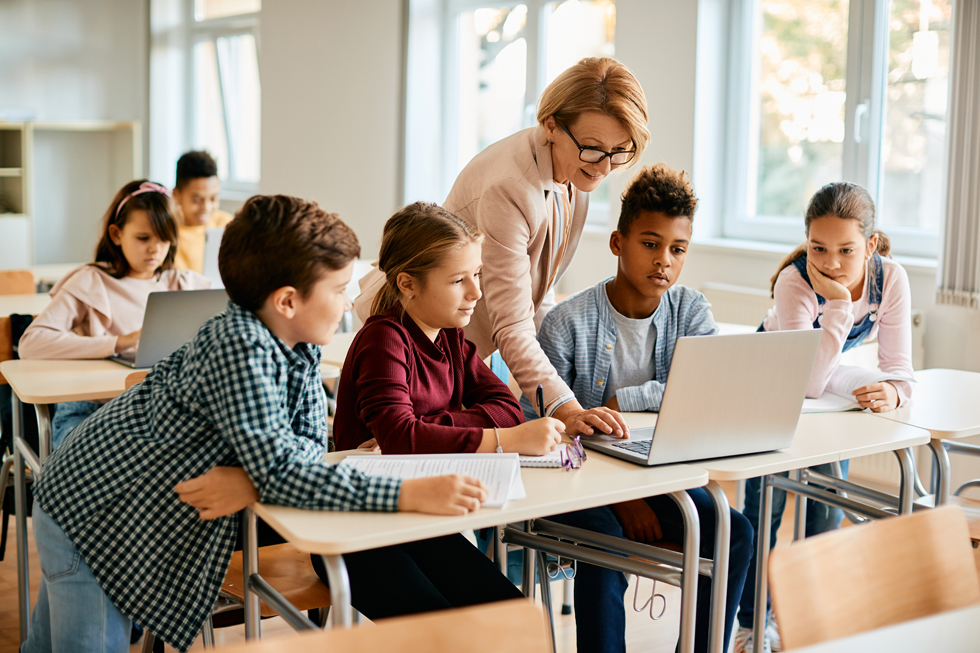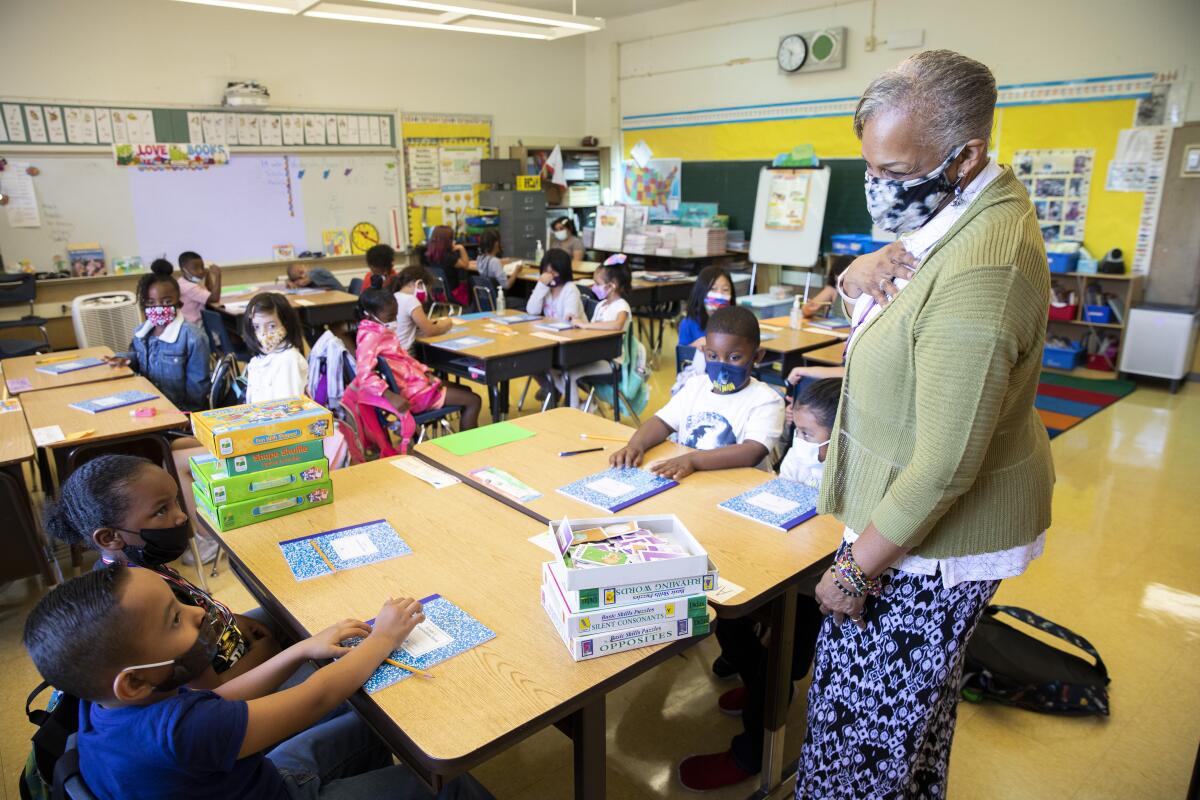Check Out the Difficulties Encountering Our Neighborhood: Save Temecula Schools
Check Out the Difficulties Encountering Our Neighborhood: Save Temecula Schools
Blog Article
The Impact of College Environments on Academic Success and Personal Well-Being
The college environment dramatically influences both scholastic success and individual health, encompassing elements such as physical design, class ambience, and interpersonal characteristics. The layout of academic areas, including all-natural illumination and ergonomic furnishings, can enhance students' concentration and comfort. Moreover, the high quality of teacher-student relationships and the nature of peer interactions play critical functions in fostering an environment conducive to learning and emotional assistance. Recognizing how these various elements interaction to shape student outcomes elevates important questions concerning maximizing instructional setups for alternative development. Just how can institutions strategically improve these elements to much better sustain their students?
Physical Design and Layout
Just how does the physical design and style of a college influence academic success? The plan and aesthetic of a college setting can significantly affect students' knowing outcomes. A well-designed college format promotes ease of motion, decreases distractions, and fosters a feeling of safety and security and belonging. For example, vast hallways and clearly significant locations promote smooth shifts between courses, minimizing lateness and disruption. Additionally, strategically placed typical areas motivate social communications, which are vital for emotional and social advancement.
Natural illumination and reliable air flow systems are essential in improving cognitive function and minimizing absenteeism. Studies have actually shown that class with enough natural light boost student concentration and lower feelings of sleepiness. In addition, ergonomic furniture tailored to pupils' requirements can prevent physical discomfort, permitting for prolonged focus and interaction in academic tasks.
Access to exterior spaces and aesthetically pleasing environments additionally play a vital role - Save Temecula Schools. Environment-friendly rooms and well-kept school grounds provide chances for physical exercise and mental relaxation, both of which are essential for maintaining high levels of scholastic performance. Fundamentally, a thoughtfully designed physical atmosphere can serve as a catalyst for scholastic excellence, cultivating an atmosphere that sustains both training and knowing
Class Environment
A favorable classroom environment is fundamental to accomplishing scholastic success. An environment that promotes a feeling of security, inclusivity, and mutual regard encourages pupils to engage even more proactively in their learning processes. The setting of a classroom, including facets such as lights, sound degrees, and seating arrangements, can dramatically affect trainee focus and inspiration. A well-ventilated, well-lit class with very little distractions can improve cognitive function and decrease stress and anxiety, therefore advertising far better academic outcomes.
In addition, the class atmosphere need to sustain a society of partnership and open interaction. When students feel comfy revealing their concepts and asking inquiries, they are more most likely to involve deeply with the material and create vital thinking skills - Save Temecula Schools. Peer interactions and team tasks can enhance learning by giving diverse viewpoints and promoting teamwork
Moreover, establishing clear assumptions and constant regimens can produce an organized environment that enables students to concentrate on their research studies. By decreasing unpredictability and offering a predictable structure, pupils can much better manage their time and obligations. Inevitably, a favorable class environment not just boosts go now scholastic performance yet also adds to the total well-being of students, preparing them for future instructional and personal undertakings.
Teacher-Student Relationships
Structure on the significance of a favorable classroom ambience, the connections in between students and educators play a critical duty in forming scholastic success. A healthy teacher-student relationship promotes a learning setting where trainees really feel valued, comprehended, and sustained, which dramatically improves their inspiration and engagement. When pupils regard their educators as compassionate and friendly, they are more probable to get involved proactively in class and look for aid when needed, adding to a much deeper understanding of the topic.

Effective communication is crucial to supporting these connections. Teachers who use open, respectful, and constant interaction develop a foundation of trust. This trust fund enables students to share their worries and concepts easily, promoting a collective learning setting. Basically, solid teacher-student connections are a foundation of educational success, playing a critical duty in both scholastic achievement and individual growth.
Peer Interactions
Peer interactions considerably influence academic success by shaping a trainee's cognitive and social advancement. Positive peer interactions can improve a student's motivation and engagement in scholastic tasks with collective knowing and common assistance.

Reliable peer communications additionally add to the development of vital life abilities, such as problem, communication, and participation resolution. These social competencies are essential for both scholastic success and personal wellness, underscoring the value of fostering positive peer characteristics within the school atmosphere.
Extracurricular Tasks
Taking part in extracurricular tasks plays a pivotal function in a pupil's academic success and personal growth. These activities, ranging from sporting activities groups to discuss clubs, supply pupils possibilities to sharpen valuable skills such as management, time monitoring, and synergy. Study consistently shows that pupils who join extracurricular activities have a tendency to accomplish greater scholastic efficiency. This connection is often credited to the structured atmosphere and the discipline called for to balance both extracurricular and scholastic commitments.
Furthermore, extracurricular participation cultivates a feeling of belonging and neighborhood, which is important for personal health. Taking part in team activities permits trainees to construct and enhance social media networks, boosting their emotional and social knowledge. These communications are critical for establishing social skills that are beneficial in both scholastic and future expert environments.
Additionally, after-school activities give a useful outlet for pupils to discover their interests and enthusiasms past the conventional curriculum. This expedition can cause the discovery of brand-new skills and possible career paths, further motivating students to involve more deeply in their scholastic job. In verdict, Look At This the role of extracurricular activities extends past mere leisure; they are indispensable to cultivating an all natural educational experience that advertises both academic success and individual development.
Final Thought
Thoughtfully created physical formats and class, along with positive teacher-student partnerships and useful peer interactions, considerably enhance pupil motivation and engagement. These aspects collectively highlight the relevance of developing and preserving optimal institution environments for the benefit of students' academic and personal growth.
Eventually, a positive classroom atmosphere not only boosts scholastic performance but additionally adds to the total well-being of pupils, preparing them for future instructional and individual endeavors.

Report this page